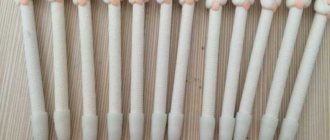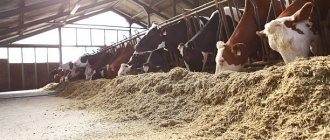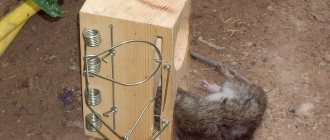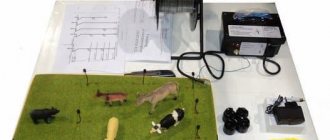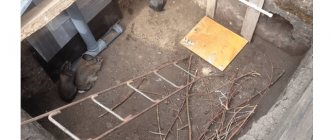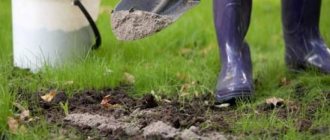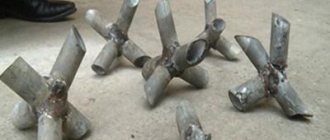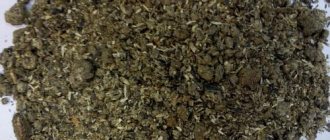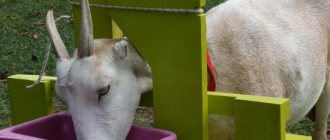Building a cow stall with your own hands seems like a simple task only at first glance . For example, it is necessary to correctly calculate the load on the foundation, make the correct floor covering so that the animals’ feet do not slip and they do not get injured. There are a number of features and standards that have been developed over the years. Thanks to them, the cow has room for free maneuvers, at the same time, too much space in the barn is not used. It is very important to initially understand whether the animals will be kept tethered or loose. There are requirements and standards for this too.
Features of a home stall for livestock: diagrams and drawings
When calculating the dimensions of the stall, not only the general parameters of the animal are taken into account, but also the space that will be used when the individual stands up, lies down, or performs other basic maneuvers.
A stall for tethered animals has 3 main tie-downs:
- the distance of the shins above the knees and to the tail is calculated to be 160-185 cm;
- head volume – approximately 50 cm;
- additional space – 50 cm.
Read about the barn project here.
These dimensions are average and can vary depending on the volume of the animals themselves: for a bull, for example, more space is required, as well as for cows, which prefer a more recumbent position.
Lack of space leads to the fact that individuals can get injured: they can sprain their leg when standing up, slip, and as a result, their milk yield and weight gain decrease.
Pen length
Based on length, experts distinguish several main types of pens:
- Long stalls (more than 2 m). The disadvantage of this method is the increase in manual labor for cleaning and irrational use of space, which leads to a decrease in milk yield.
- 1.7-2 m. This range is most often used in livestock farming. It is optimal for tethered cows, as it provides the necessary minimum freedom without compromising production performance.
- 1.1 – 1.4 m – the range is too short for cows. Under such conditions, one cannot say that the animal is safe. Latticework at the rear of the stall can damage the udder and lead to mastitis and other diseases.
Read about a pigsty for 50 heads with your own hands at the link.
Width
The width is never less than 1 m - this is an absolute unit for all adult animals.
A width of 80 cm is allowed if the stall contains young animals up to 18-20 months. But in most cases, the width is calculated taking into account the characteristics of the group: milking, slaughter, young animals.
Floor
If we talk about the norm of square meters of floor per cow, then it varies from 1.7 to 2.3 square meters. m. Knowing the minimum floor area and width, the missing parameters are also calculated. Do not forget that the floor for draining feces must contain a slight slope. If the slope is severe, cows may be injured, so the recommended value is no more than 20°.
It is divided according to the coating:
- solid;
- a partially lattice covering under which the tank was placed.
The lattice covering is covered with rubber mats, which reduces the risk of injury.
Basically, natural wood is used in the barn - it provides natural warmth and reduces additional costs for bedding. On average, such a floor will last about 2-3 years.
If longer operation is required, then use a concrete foundation. It has its undeniable advantages:
- does not dampen;
- does not absorb specific odors;
- keeps mice, rats and other pests out.
But the concrete floor has a significant drawback - it is cold. Therefore, in order to provide cows with comfortable living conditions, bedding is laid out for them.
Litter in the barn
Bedding in most cases consists of scattered hay, which is removed along with feces once a week. Sometimes polyurethane coverings or rubberized mats are used as bedding on large farms. The bedding in the barn maintains hygiene and provides warmth to the animal during the cold season.
Walking yard
Keeping animals in a household implies the presence of a walking pen, which is located on the outside of the premises. The size of the area should allow cows to move freely along the street. As a rule, a household requires one or two cows and several calves. For such a herd, the walking path should be at least half a kilometer. Of course, on large farms this figure will be completely different.
The walking yard must be equipped with canopies to protect animals from bad weather, a fence made of logs and gates so that the cows cannot freely leave the area allocated to them.
Arranging a place for cattle
For free-grazing cows and an animal that spends all its time in a stall, there will be different building conditions.
If the farm is large, but free-stall maintenance is implied, then the law described below does not make sense to build. In this case, simply a separate meadow is allocated, on which a corral and a small natural canopy are arranged.
Read about building a pig shed with your own hands in this material.
When loose
If you mean free range, i.e. without a leash, then a pen should be built next to the barn, where the animals can go out at any time. The total length is approximately 500 m per cow or calf. As a rule, a pen on small farms is built with 2-4 animals, including calves. Sometimes a sun canopy with tiles or decking is built over it, while the fence itself, the gate and posts are made of full timber.
When tied
The size of the stall for tethered housing was discussed above. It is worth noting here that, provided that the cow or bulls will be tied, then the feeder should be made double: for clean water and feed, for each cow. They are also planning a manure compartment with a reservoir.
To limit the maneuverability of cows, limiters are attached between the posts. The latter do not interfere with the individuals lying, but at the same time they hold its head above the feeder; and the main flow of excrement is discharged into the reservoir.
Construction from metal pipes
The stall for the cow helps to position it correctly - with its muzzle towards the feeder. When choosing the size, you do not need to make it too wide, as the animal can turn its back to the feeder, and this leads to contamination of the food.
For cattle, you can build your own stall from metal pipes. Their optimal diameter is 60 mm. For example, let’s take as a source a barn designed for two cows that require two stalls.
The room is divided in half by a line and three holes are dug on it. One is near the wall, the second is 80 cm away and the third is 170 cm from the wall. The same holes are dug at the side walls. As a result, the source material is dug into each of them and filled with concrete. This results in 9 pipes coming out of the floor. It is desirable that they be the same height.
Now they need to be secured with connecting metal tubes using welding. First, they are laid horizontally along the top, then along the bottom and welded to vertical blanks. The required length of pipes is prepared in advance.
Dimensions for home conditions
The Russian state, depending on the type of cattle, its breed and gender, has developed NTP 1-99 standards, which are supported in agriculture:
- Dry and dairy cows have a stall width of 1.0 – 1.2 m; and the length is 1.7 - 2 m.
- Individuals in deep pregnancy: width - 1.2 -2 m; length -2 m. In this case, a long type of stall is relevant.
- Novotelnye: width 1.2 m; length – 2 m.
- Meat breeds: stall width – 0.9-1.0 m; length – 1.7 m.
- Young animals up to 20 months: width 0.8-1 m; length 1.7 m.
Read how to build a barn with your own hands here.
Stud bulls are in need. Like pregnant cows in a long stall of about 2 meters.
Manufacturing instructions
So, the easiest way to make a cow feeder with your own hands is from wooden boards. If you are not afraid to work with wood and know how to clean it properly, then such material will not only look natural and clean, but also comfortable. You can use pine or oak. Today there are three types of feeders: movable, folding and lifting. We will produce a lift with folding walls.
We will need:
- wooden boards;
- woodworking tools, grinder;
- measuring tape;
- drawing;
- steel rods or wooden slats.
Manufacturing
- First, we find suitable boards, dry them, clean them and sand them.
- We take the drawing and set the required dimensions: bottom width - 45 cm, width of the feeder itself - 80 cm, height of the outer side - 30 cm, inner side - 100 cm.
- On the inner side, for the convenience of the animal, we make a small recess for the head and neck.
- After the structure itself is ready, you can make a lattice from wooden slats or steel rods. It will prevent hay from scattering. For convenience, we provide several options for drawings of do-it-yourself feeders.
a - ground; b - height adjustable: 1 - side trough; 2, 3 - bent twig and tendril of the bucket holder; 4 — crossbar; 5 - feeder; 6 - riser; 7 - hole; 8 - stopper; 9 - bucket; c - tether feeder: 1 - side trough; 2 - feeder; 3 - collar; 4 - riser; 5 - chain; 6 - bracket
Requirements for how to properly make a stall for a cow with your own hands
The main requirement for the premises is to create the necessary space for comfortable sleeping , eating and maneuverability of cows. In addition to thinking through and drawing the dimensions of the room, you should remember other components:
- Barn ventilation. Most often it is made natural, but in such a way as to avoid drafts.
- Heating system. Either pipes with hot water are laid, or initially during construction, insulating material is laid on the walls, floor, and roof.
- Lighting. In addition to daylight, barns must also have artificial light.
- Drinking bowls for cattle. The water supply is provided either by hand ore or by a complex plumbing system.
- New removal device. There are several ways to remove slurry, one of the popular ones is to replace the bedding weekly.
One animal location varies in the range of 6-10 square meters. m; and the ceiling height is at least 2.5 meters.
Design
A cow housing project is not an extravagance or a waste of money. A well-executed design solution can lead to significant savings.
The customer draws up a technical assignment for the designer, indicating in it all the wishes for the future structure. Designer:
- analyzes the capabilities and requirements of the technical specifications, correlates them with legal norms;
- ties the project to the construction site;
- selects building materials;
- determines the estimated cost of the object.
Often a standard project, that is, a project previously completed by another developer, is sufficient. Standard designs are carried out by manufacturers of structures used in construction. The condition is simple: the customer purchases a set of structures for the construction of a building, the project costs free or at a minimal price.
A barn for 5-10 heads can be built without a design, but it is advisable to know the basics of design and general requirements for the construction.
It is impossible to study all the subtleties of design and the possibilities of various design solutions. You should pay attention to the most economical and easiest to implement options - buildings made of light metal structures.
conclusions
You can build a stall with your own hands and do it simply, the main thing is to adhere to certain rules (drawing, algorithm):
- There are clear standards prescribing what distance a cow must be provided for normal existence at home (it can be tied or raised in a free-stall manner).
- If you make the stall smaller than the specified dimensions, the animal may be injured.
- The floor in the barn is made with a slope, but not more than 20°.
- In addition to the pen itself: it is equipped with a drinking bowl, a feeding trough, a manure remover, artificial lighting, insulation, sewerage and ventilation.
- In case of free grazing, a pen is attached to the main stall, with a long path of at least 50 meters.
Read about loose housing for cows in this article.
Construction process
It is not difficult to build a small barn with stalls for bulls or cows yourself. The main thing is to carry out the calculations and arm yourself with the appropriate consumables. This video will help you implement your plans on your own:
But the design of a large barn with stalls for cows, as well as its construction, should be entrusted to an experienced person. The latter will be able to take into account all the necessary details.
Foundation
Its quality affects the service life of the building. If you plan to build a brick barn, it is better to pour a monolithic foundation under it. For a wooden barn, a column barn is also suitable. When pouring any type, drainage is organized and waterproofing is performed.
Floor, walls, roof
The base must be suitable for cattle hooves and waterproof. Sometimes the floor in the stalls is made of planks. But more often they pour concrete. To drain feces, gutters are laid 1 cm high and 2 cm wide, having provided for a slope in advance.
The walls protect the cattle from the winds, creating the necessary microclimate in the stalls. When constructing a large barn, they are laid out from adobe bricks. The building for the cows is edged from below with straw and clay masonry.
Expert opinion
Zarechny Maxim Valerievich
Agronomist with 12 years of experience. Our best country expert.
Ask a Question
If you choose baked brick for laying walls, make the thickness 1.5 pieces. For a small structure (keeping several cows at home), preference is given to wood that retains heat.
Finally, a roof is laid over the stalls - tile or slate. In areas with warm winters and long daylight hours, they are covered with polycarbonate. An attic is provided under the vault. The latter, in addition to its air gap functions, will be an excellent storage for hay and equipment.
What are calf houses for?
Previously, young animals were kept together with an adult herd. A calf near a cow gains weight faster. In addition, there is no need to equip additional premises. However, the outdated method has a huge disadvantage. Adults are carriers of pathogens. Cows have good immunity, but young calves are still weak. The young animals begin to get sick, lose weight, and some individuals even die.
Due to the great competition in the agricultural market, farmers have become faced with a serious problem related to the need to improve the survival rate of young animals. To separate calves from the adult herd, houses were invented. The design resembles a box. Private livestock breeders knock down wooden houses. Boxes made of food-grade polymer are produced for farms. The material is durable and completely eliminates the possibility of injury to the animal.
Plastic boxes are lightweight and durable. The lower part has an expansion, which ensures the stability of the structure. The house is easy to wash and can be easily moved or carried by two people to another place. Install the box inside or outside the barn. On the entrance side, a metal fence is installed for walking animals, feeding troughs and drinking bowls are installed.
Important! Initially, the technology of using houses gave a negative result. Livestock breeders began to abandon it. As a result of the research, it was found that the problem was improper feeding of calves.
Advantages and disadvantages of raising calves in hutches
The technology of keeping calves in separate boxes has its positive and negative sides.
Advantages:
- Raising calves separately eliminates the possibility of contracting dangerous diseases from adult cows.
- It is easier to keep clean in the houses. Plastic boxes are easy to wash, making it convenient to change the bedding for calves more often.
- A box installed outside the barn allows calves to breathe clean air rather than ammonia fumes.
- When the box is installed outdoors, the young animals receive sunlight. Animals absorb vitamin D, which promotes health.
- The solid walls of the house protect the calf from drafts and cold winds. The likelihood of the animal developing a cold is reduced.
- Young animals reared separately are easier to monitor: assess their general condition, growth, and weight gain.
- Separate houses make it possible to provide individual nutrition to each calf and raise weak individuals to their feet.
Flaws:
- additional costs for purchasing boxes for calves;
- with the onset of cold weather, it is more difficult to heat the box, calves begin to consume more feed;
- In order for calves to set up separate boxes, free space is required.
However, due to the possibility of repeated use, the houses pay for themselves over time and begin to make a profit.

